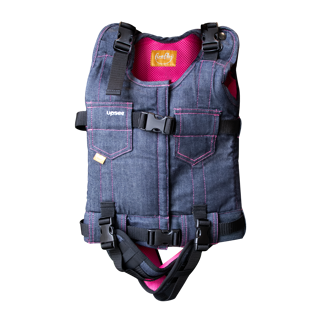Mac's Upsee Story
The Upsee and Me:
Working to Change Perceptions
Mac is a five year old boy diagnosed with Pitt Hopkins syndrome, a rare neuro-developmental disorder. During his pre-school years, Mac attended daycare on a daily basis requiring maximum assistance for movement and personal care both inside and outside the home. He was joined at his daycare by peers with and without disabilities.
Clinical Background
Mac communicates non-verbally for the most part and shares several traits associated with children with autism spectrum disorder. This includes repetitive behaviour and interests as well as some difficulty with social interaction and communication. Mac also gets anxious with changes in his daily routine and when he meets new people. Motor deficits, low muscle tone and ataxia limit his mobility options. As such, Mac often moved around with a wheelchair and/or is carried from place to place. Mac’s disability places him at risk for fatigue and recurring seizures. Mac’s parents did not want Mac to feeling isolated and lonely in his daycare or be restricted to sitting in a corner, swing or taking naps. Without mobility assistance, Mac did not have many opportunities to explore his physical and social environment with his peers. When children went outside to play or handled toys Mac was not easily included. Consequently, social interaction between Mac and his peers whether through games, physical activity or free play was limited.
Our Approach
Based on parental initiative, Kinesiologists offered Mac the opportunity to use the Upsee in the daycare each day to improve the ability to perform age appropriate activities and encourage social inclusion with peers during daycare routines. Mac would wear the Upsee for an hour per day. The device allowed Mac to stand, ambulate and explore movements with assistance from an adult. It also allowed Mac to stand at eye level with his peers and vice-versa opening up a new world of possibilities for social engagement. As Mac became more familiar with movements, therapists introduced new tasks and challenges that sought to include other children. Therapists acted as social facilitators making initial contact with peers to encourage social interaction between children with and without disability.
The Result
Kinesiologists began to see the perception of children without disability change towards Mac. Daycare workers commented how children without disabilities started to enjoy playing with Mac at the daycare. Several children began to initiate activities with Mac when he was wearing the Upsee, asking if Mac could be included in games and dancing routines. In this way, the Upsee has helped show children Mac’s abilities and what he can do on a daily basis when provided with the right support. They have shown that Mac can play ball games, tag, hide and seek as well as other age appropriate activities when given the opportunity. Mac uses the Upsee to participate in challenger baseball alongside his friends and family. Now Mac attends school and still wears the Upsee as a means to be included during some of his recess breaks. His peers at school are familiar with Mac in the Upsee and increasingly expect him to be involved in daily activities on the playground.
Upsee
Upright Activity, Mobility Harness
Upsee is mobility harness designed to allow children with motor impairment to stand and move with the help of an adult. It allows children with additional needs to experience upright movement like anyone else. Some have been able to stand and hug their little brother or sister for the first time. Some have waved at neighbours on their first ever walk along their own street. And some crossed the playground hand-in-hand with their best friend for the very first time.
View







